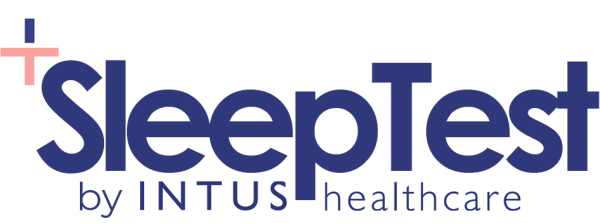Fact Checked
Intus Healthcare’s writers, customer service team, and sleep experts review and ensure this information is accurate.
Last updated on January 7th, 2025 at 03:56 pm
For many CPAP users, getting comfortable with the therapy can be difficult, and the temptation to skip a night here and there can often prove too much to resist. However, one of our customers, named Alan, has shown that a solution as simple as trying a different mask can make a huge difference to your acceptance of CPAP. Here is Alan’s story.
Alan shares his experience of Sleep Apnoea
Alan has an unusual version of Obstructive Sleep Apnoea called Asymptomatic OSA. This means he has OSA, but without any symptoms such as daytime sleepiness.
However, having suffered a stroke, his doctor advised him to take a sleep study, and OSA was duly discovered. Despite having no regular symptoms, Alan was advised to use CPAP to prevent the pressure OSA puts on the heart.
Accepting CPAP can be difficult, even when you can feel the benefits the next day. As Alan was Asymptomatic, it was even harder to find the motivation, as he felt no ill effects of OSA anyway, and so whether he used the CPAP or not felt different the next day. So, when he was having trouble adapting to his mask, the option to opt out of his therapy was an easy one to take regularly.
“I took my CPAP off because it became uncomfortable”
“The reason I took my CPAP off is because it became uncomfortable at times; once I moved, then it moved, and it bugged me,” said Alan. “Also, it was between 25 and 30’C at night here, so it made me too hot. It didn’t make me feel any better because I never felt bad!”
“The only reason I was wearing it is because I do have Sleep Apnoea, and I had a small stroke and ventricular tachycardia (fast heart rhythm), so the doctor insisted I drink no alcohol and use the CPAP. So I did! My heart arrhythmia is much better now, so I am out of the woods”.
When Alan contacted us, we could use the unique SmartCode system from his DeVilbiss SleepCube CPAP machine to see exactly how his therapy was going. This simple system displays a set of codes on the display of his machine, which he could then email over to us. These codes could let us see some crucial information: Alan was only using his CPAP on 70% of nights, but when he did, his AHI (the measure of OSA severity) was down to 2.0 – well within the safety zone of 0 to 5.
What this meant was that although Alan was having difficulty using CPAP, and 30% of the time chose not to use it, when he was using it it was working very well. For this reason, we tried to find a solution to Alan’s problems with using CPAP and suggested that he try using the SleepWeaver CPAP mask instead. The difference was remarkable.
“The SleepWeaver Cloth Mask is so much better than the nasal pillows mask that I was using before. I sleep much better” said Alan. His partner Carol was also very pleased: “I just wanted to let you know that the SleepWeaver cloth mask is brilliant! Alan sleeps so much better, and we can recommend it! His nose doesn’t get cold or sore. Yahooooo!” Not for the first time, it would appear the partner is the one more grateful for successful CPAP than the patient themselves!
“A change of mask made a world of difference”
This improvement was evident from another look at Alan’s SmartCodes. Where his previous usage had only been at 70% of nights, it now went up to 100% when using the SleepWeaver while his AHI during use remained at a very positive 2.0. This meant that Alan was getting very effective CPAP therapy every single night. The key to the change was simply trying a different CPAP mask.
Although, in this case, a change of mask was the silver bullet Alan needed for his CPAP troubles, it may not always be the solution. However, the important thing to remember is that if you are having problems with your CPAP you should speak to somebody and find a solution.
Need support with your CPAP equipment?
At Intus, we’re always looking to help our customers get the most out of their CPAP and will be more than happy to advise you with any issues you may have been having.
CPAP can be challenging, but millions of people have used it, so if you have a problem, there’s a good chance a solution has been found. OSA can cause significant health problems, even for those without symptoms, such as Alan, so getting the therapy right for you is very important.
That is where we come in – so if you are having problems with your CPAP or are anticipating some if you have not started using it yet, feel free to contact us and we will be more than happy to discuss any issues with you, and help you really get comfortable with CPAP.
About Our Editorial Team
Danni is a degree-educated content writer passionate about helping those with Sleep Apnoea sleep better; she works closely with our clinical and customer care teams to ensure that each article is thoroughly researched and accurate.
Her writing aims to inform, support, and advise readers about Sleep Apnoea, helping to raise awareness and promote effective treatment options.
She has written many health-focused articles, reaching hundreds of readers annually, to help people sleep better and live healthier lives.
Lateisha King is an experienced Sleep Clinician with advanced training in polysomnography and respiratory health.
With over six years of experience, including at the prestigious Guy’s and St Thomas’ NHS Foundation Trust Hospital, she has conducted and reviewed more than 500 diagnostic sleep studies.
Her expertise in sleep science ensures that all articles align with the latest data and treatment protocols, providing readers with trustworthy and practical advice to improve their sleep health and overall well-being.
Published: June 13, 2019





